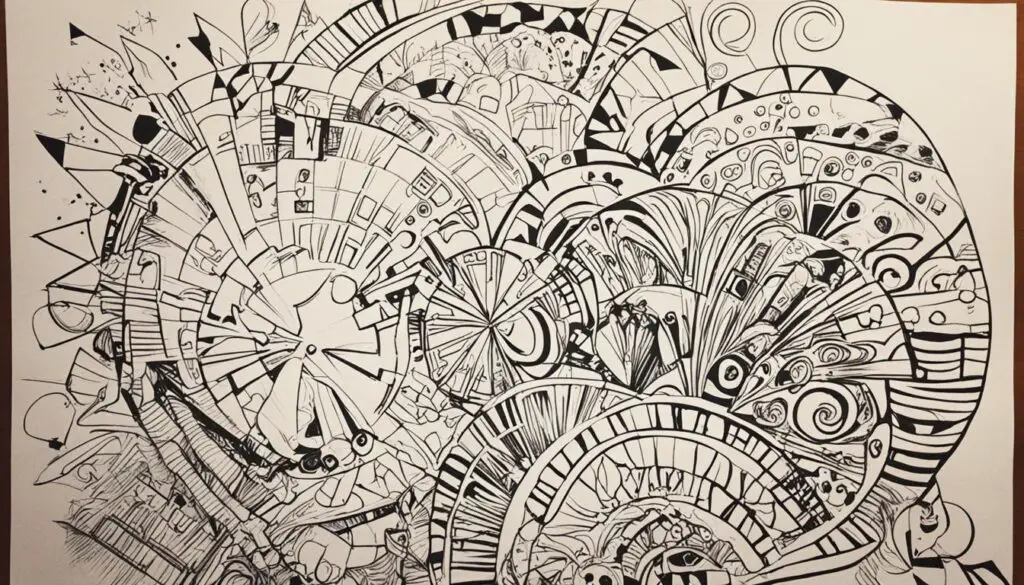Characterization is a big deal in literary analysis. It’s how authors show their characters to us. By looking at how characters are presented, we can learn a lot about the story and its themes. This article will show you how to dig into characterization.
Authors make their characters come alive through different methods. They describe how characters look and act. They also get into what the characters think and feel. This lets us understand why characters do what they do.
It’s important to identify the different characters in a story. The main character, or protagonist, leads the story. Then, there’s the antagonist, the character who opposes the main one. There are also supporting characters, like friends or mentors.
Authors use different tools to develop their characters. Some use direct ways, telling us about the characters outright. Others show us indirectly through what the characters say and do. Exploring how characters are described and shown in the story helps us understand them better.
When you’re analyzing a character, do it carefully. Read the assignment well and take notes on what the character is like. Also, think about how the character fits into the story as a whole. This will lead to a deeper understanding.
Character analysis is key to understanding a story deeply. By understanding how characters are developed, you can get to the core of the story. It’s about paying close attention to how characters act, think, and feel.
Key Takeaways:
- Examining how authors create characters is a big part of understanding literature.
- Characters have different roles, like leading the story, opposing the main character, or supporting them.
- Directly and indirectly showing character traits are common ways for authors to build their characters.
- Looking at how characters are described, the language used, and the style of writing can reveal a lot.
- To analyze a character, read closely, take good notes, provide examples, and think about their role deeply.

The Importance of Character Function in a Story
Understanding a character’s role is key to understanding a story. Characters vary in purpose and greatly influence the story and its themes.
The main character, known as the protagonist, moves the story ahead. They face obstacles that engage the readers emotionally. By understanding a protagonist’s goals, we see the story’s core themes. Their function is vital in conveying the story’s messages.
The antagonist, on the contrary, causes conflicts for the protagonist. They work against the main character’s goals, creating tension. Through this, the antagonist forces the protagonist to change and grow.
There are more roles than just the main hero and villain. For example, a foil characters make others seem different by comparison. This adds layers to the story’s characters.
A mentor character guides the protagonist through challenges. They offer advice, wisdom, and critical support. Mentors play an essential part in a main character’s development.
By understanding why a character is in the story, we better grasp their actions and meaning. This knowledge helps us see the story’s depth and the author’s intent.
Let’s take a closer look at the character function of each role in the table below:
| Character Function | Description |
|---|---|
| Protagonist | The central character who drives the story forward and faces conflicts. |
| Antagonist | The character who opposes the goals and desires of the protagonist, creating conflict. |
| Foil | A character who contrasts with another character, highlighting their strengths and weaknesses. |
| Mentor | A character who serves as a guide or teacher to the protagonist, offering wisdom and support. |
Understanding how characters function is crucial to understand the story’s meaning. Their actions and roles shed light on the story’s narrative and themes.

Analyzing Characterization in a Character Analysis
Understanding the story and its people is key. When we analyze characters, we look closely at how artists show them to us. This means we study how they behave, what they say, and what they look like.
Direct characterization tells us things straight out. It covers stuff like how a character looks, what they do for a living, and how people see them. This type of info is clearly stated in the story.
Shifting to indirect characterization, we learn about characters in a different way. Here, we figure out their personality through what they do, say, and think. It’s like solving a puzzle. We use clues from their behavior or words to understand who they really are.
To deeply dissect a character, we look at how they talk, think, and act. We also consider the effects they have on others and their looks. By doing this, we can really understand who the character is. This deeper understanding makes the story more interesting. And it gives us insights into what the writer wanted to say.
FAQ
What is the importance of analyzing characterization in a literary analysis?
Understanding how authors present characters is key in analyzing literature. It shows us the deeper meaning behind the story and its themes. This process helps us dig into the author’s world.
What are the different types of literary characters?
Literature features many character types. This includes key characters like protagonists and antagonists. However, there are also side characters and those of varying depth and complexity.
What are some techniques authors use to portray characters?
Writers show us characters in different ways. They can tell us directly about a character, like their job. Or, they can show a character’s true self through what they say and do.
How should I prepare for a character analysis?
Before diving into a character analysis, read and grasp the task. It’s essential to take detailed notes on the character’s traits and role. This preparation is vital for drawing insights from the text.
What is the function of a character in a story?
Every character in a story has a distinct purpose. Protagonists advance the plot. Antagonists bring challenges. It’s like a puzzle; each piece plays a unique part to tell the story.
What should I consider when analyzing characterization in a character analysis?
Dig deep into how the author brings characters to life. Consider the writing style and structure. Analyzing these elements helps us truly understand a character’s journey.






